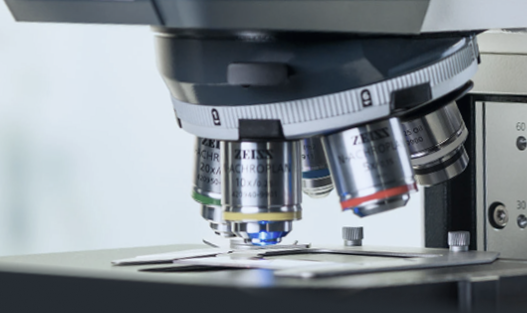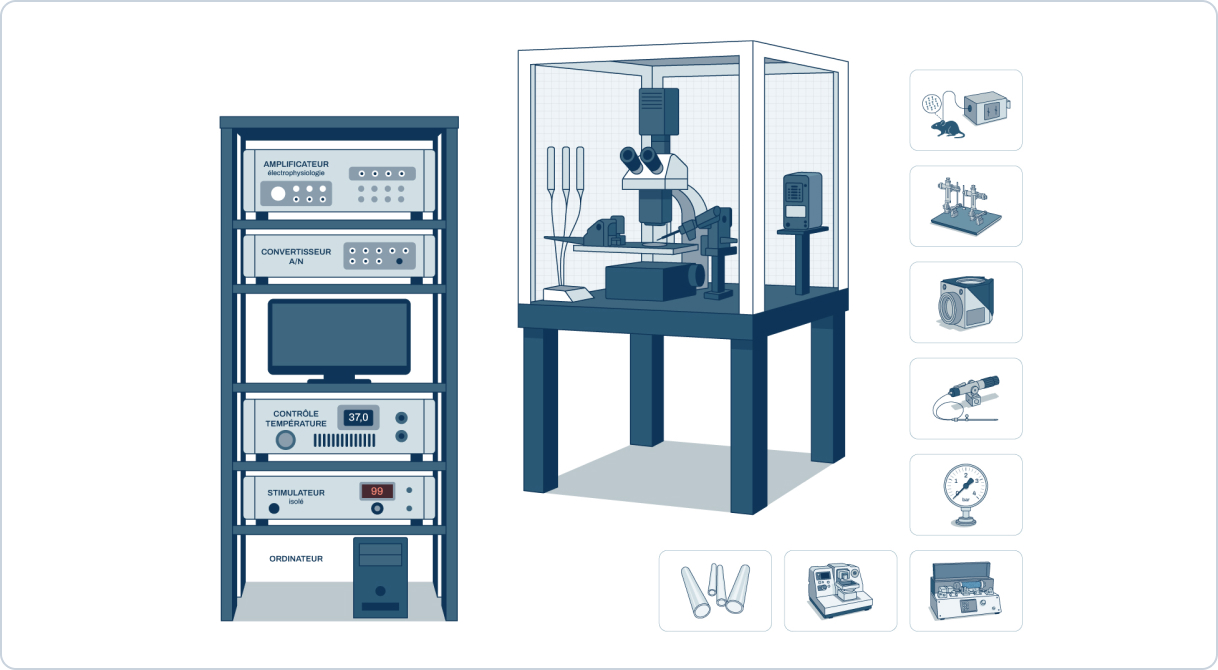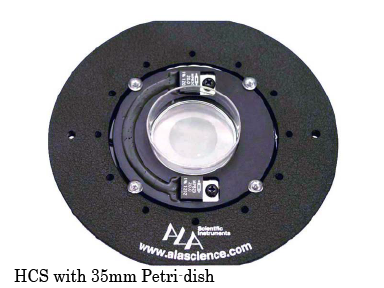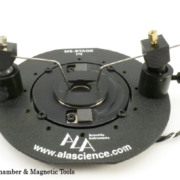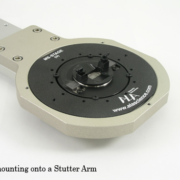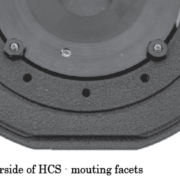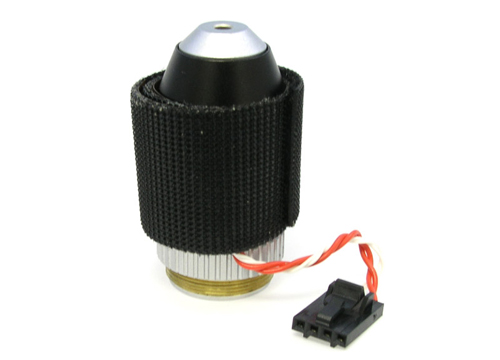Heating device HCS
The HCS stage micro-incubator is a microscope stage-mounted heating device designed to maintain physiological temperatures in culture chambers (35 mm Petri type) or ALA-compatible imaging chambers.
It is positioned directly on the microscope stage (Zeiss, Nikon, Leica, Olympus, etc.) and provides a uniform heat source around the sample.
Its design incorporates a heating ring, a feedback thermistor and magnetic or threaded fixings for accessories. Temperature control is provided via compatible controllers from the ALA range or other suitable controllers (12 V max, 2252 Ω return).
Heating device HCS features
- Heating only (no cooling function)
- Compatible with temperature controllers up to 12 V
- 2252 Ω feedback thermistor at 25 °C
- Heating ring consisting of two power resistors in parallel
- Direct mounting on standard microscope stages (Zeiss, Nikon, Leica, Olympus)
- Magnetic steel outer ring with threaded holes (11 × M-3 + 2 × M-4)
- Compatible with ALA-MS chambers (19 mm) or 35 mm Petri dishes
Technical characteristics of the HCS heating device
| Caractéristique | Valeur |
|---|---|
| Model | HCS (Heated Chamber Stage) |
| Type of heating | Resistance heating (heating ring) |
| Return thermistor | 2252 Ω at 25 °C |
| Maximum input voltage | 12 V DC |
| Maximum power | ≈ 20 W |
| Maximum temperature | 65 °C |
| Dimensions | 114 × 110 × 7.8 mm |
| Microscope compatibility | Zeiss, Nikon, Leica, Olympus, Gibraltar, Scientifica, Narishige ITS |
| Mounting holes | 11 × M-3, 2 × M-4, mounting facets |
| Materials | Inner ring in anodised aluminium, outer ring in painted magnetic steel |
Applications
- Maintaining the temperature of live samples during microscopic acquisitions
- Electrophysiology experiments requiring a stable temperature
- Fluorescence imaging or real-time microscopy with thermal control
Documentation
Manuel
PDF file – 488.7 ko
Produits similaires
-
The OBJ-HEATER objective heater is designed to maintain microscope objectives at a constant temperature, preventing condensation and ensuring stable physiological conditions during imaging and electrophysiology experiments.
